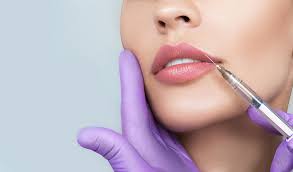
Dermal Fillers
Dermal fillers are injectable treatments used to restore volume, smooth wrinkles, and enhance facial contours. Made from substances like hyaluronic acid, these fillers are used to plump areas such as the cheeks, lips, and under the eyes, giving a more youthful appearance. Dermal fillers can also improve the appearance of fine lines and folds, and results typically last from 6 months to 2 years, depending on the product used. The procedure is minimally invasive with little downtime, making it a popular choice for facial rejuvenation.
Price: $450 and up per syringe
FAQs:
What are dermal fillers, and how do they work?
Dermal fillers are injectable substances designed to add volume, smooth wrinkles, and enhance facial contours. They are commonly made from hyaluronic acid (HA), a substance naturally found in the body that helps retain moisture and elasticity in the skin. When injected, fillers restore lost volume, smooth out lines, and can even enhance features like lips and cheeks.
How long do dermal fillers last?
The longevity of dermal fillers depends on the type of filler used and the area treated. Most hyaluronic acid-based fillers, like Juvederm or Restylane, last between 6 to 18 months. Other fillers, such as calcium hydroxylapatite (Radiesse) or poly-L-lactic acid (Sculptra), can last up to 2 years. Regular touch-ups may be needed to maintain the desired results.
Are dermal fillers safe?
When administered by a qualified healthcare professional, dermal fillers are generally safe. Side effects are usually mild and temporary, such as swelling, redness, or bruising at the injection site. In rare cases, more serious complications like infection, allergic reactions, or lumps may occur. A thorough consultation with an experienced injector reduces the risk of complications.
Do dermal fillers hurt?
Most patients report minimal discomfort during the procedure. Many dermal fillers contain lidocaine, a local anesthetic that helps numb the area and reduce pain. Additionally, practitioners often use numbing cream or ice to further minimize discomfort. Some areas of the face may be more sensitive than others, but overall, the procedure is generally well-tolerated.
What is the recovery time after dermal fillers?
Recovery time after dermal fillers is typically minimal. Most patients can return to their normal activities immediately after the procedure. Some mild swelling, bruising, or redness may occur at the injection site, but these side effects usually resolve within a few days. It's advised to avoid strenuous activity, excessive sun exposure, and alcohol for 24 hours following the treatment to ensure optimal results.
